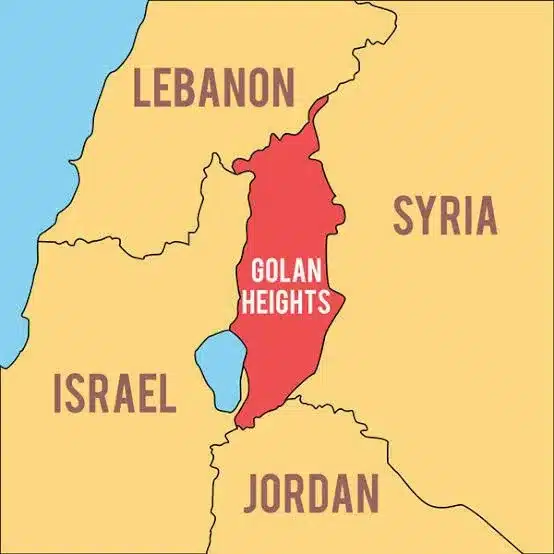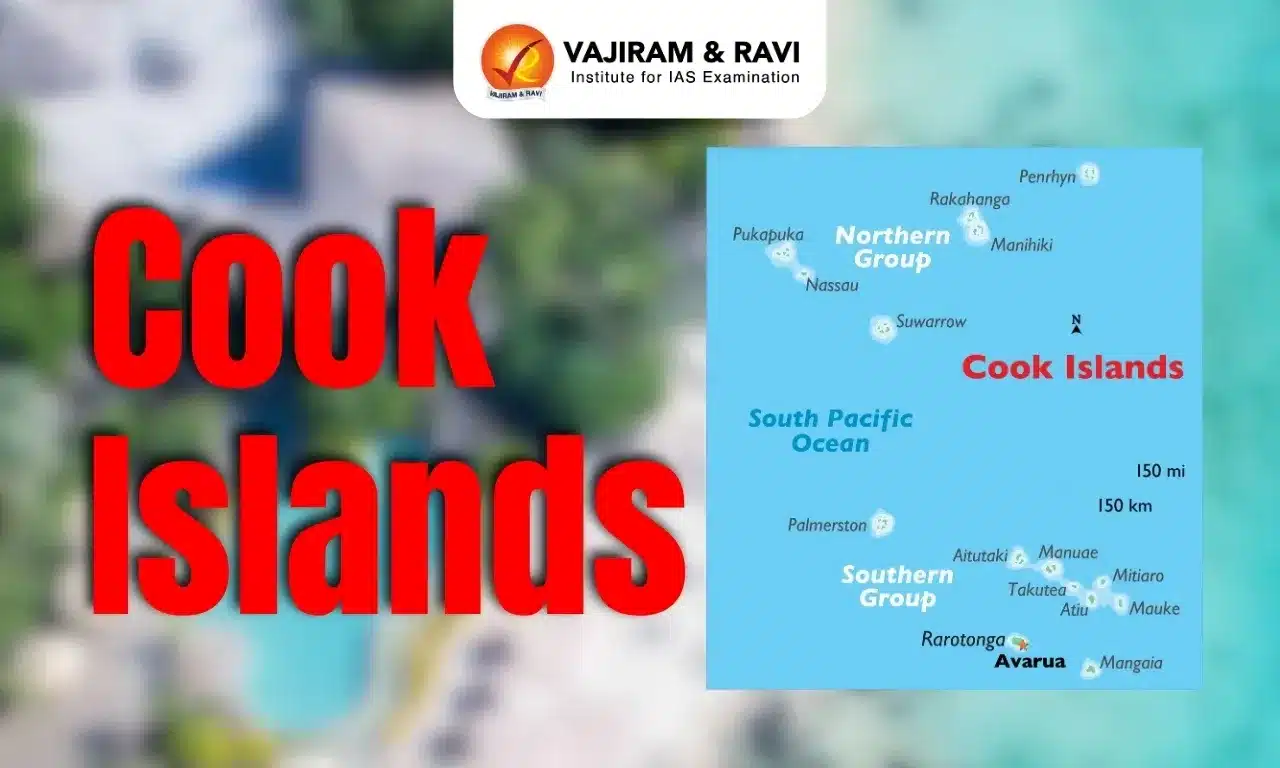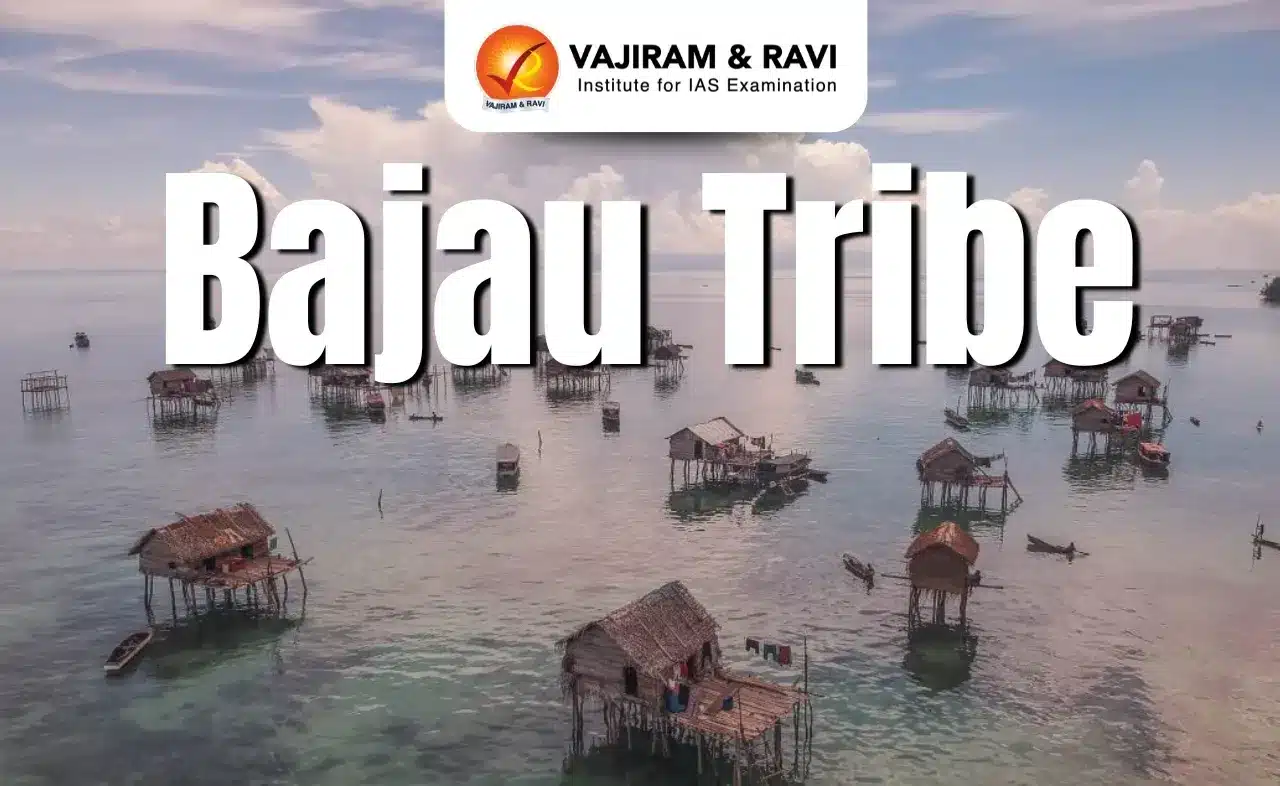About Golan Heights:
- It is a hilly area overlooking the upper Jordan River valley on the west.
- It is aSyrian territory occupied by Israel since 1967.
- The area’s name is from the biblical city of refuge Golan in Bashan.
- It is bounded by the Jordan River and the Sea of Galileeon the west, Mount Hermon on the north, the seasonal Wadi Al-Ruqqād River on the east, and the Yarmūk River on the south.
- It extends about 71 km from north to south and about 43 km from east to west at its widest point.
- It is roughly boat-shaped and has an area of 1,150 sq.km.
- History:
- The area was part of extreme southwestern Syria until 1967, when it came under Israeli military occupation in the closing stages of the 1967 Six-Day War.
- Most of the Syrian Arab inhabitants fled the area during the conflict.
- Syria tried to retake the Golan Heights during the 1973 Middle East war, but the attempt was thwarted.
- Both countries signed an armistice in 1974, and a UN observer force has been in place on the ceasefire line since 1974.
- In December 1981, Israel unilaterally annexed the part of the Golan it held.
- It’s considered occupied territory under international law and UN Security Council resolutions.
- There are more than 30 Israeli settlements in the Golan Heights, which are home to an estimated 20,000 people.
- They are considered illegal under international law, which Israel disputes.
- The settlers live alongside some 20,000 Syrians, most of them Druze Arabs who did not flee when the area came under Israeli control.
- Strategic Importance:
- The Syrian capital, Damascus, can be clearly seen from the top of the Golan Hills.
- It overlooks northern Israel’s Galilee region and the Sea of Galilee and dominates the route to Damascus on the Syrian-controlled side.
- Importantly, the Golan Heights shares a border with Jordan and Lebanon.
- The area is also a key source of water for an arid region. Rainwater from the Golan’s catchment feeds into the Jordan River.
Q1: Where is the Sea of Galilee?
The Sea of Galilee is a large freshwater lake located in the Jordan Rift Valley between the Galilee region and Golan Heights in the northeastern part of Israel, close to its borders with Jordan and Syria.
News: Israel plans to double population in Golan, cites threats from Syria
Last updated on June, 2025
→ UPSC Notification 2025 was released on 22nd January 2025.
→ UPSC Prelims Result 2025 is out now for the CSE held on 25 May 2025.
→ UPSC Prelims Question Paper 2025 and Unofficial Prelims Answer Key 2025 are available now.
→ UPSC Calendar 2026 is released on 15th May, 2025.
→ The UPSC Vacancy 2025 were released 1129, out of which 979 were for UPSC CSE and remaining 150 are for UPSC IFoS.
→ UPSC Mains 2025 will be conducted on 22nd August 2025.
→ UPSC Prelims 2026 will be conducted on 24th May, 2026 & UPSC Mains 2026 will be conducted on 21st August 2026.
→ The UPSC Selection Process is of 3 stages-Prelims, Mains and Interview.
→ UPSC Result 2024 is released with latest UPSC Marksheet 2024. Check Now!
→ UPSC Toppers List 2024 is released now. Shakti Dubey is UPSC AIR 1 2024 Topper.
→ Also check Best IAS Coaching in Delhi
























